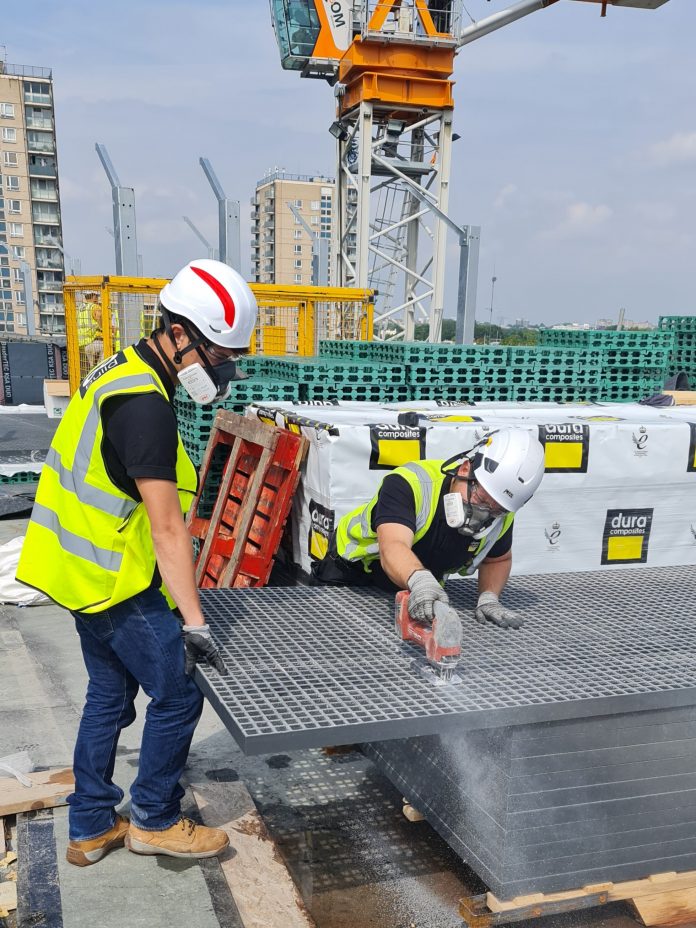Charmaine Steele, head of culture and people development at Dura Composites, explores why we are failing to attract young people and women in construction and how the industry can combat this
The construction industry is experiencing a lack of qualified people available in relation to the demand for work. This has been an ongoing issue over the previous years, worsened by the restrictions of the Covid-19 pandemic and the aftermath of Brexit which resulted in large amounts of migrant workers returning home. The skills gap has resulted in masses of vacancies within the sector spanning across the UK. On average, only 11% of the UK’s construction workers are women, and with the average age of workers in the sector getting older, the industry is clearly failing to attract young people and women, but why?
What is deterring young people from construction?
All aspects of work within the construction industry require specific skills and knowledge. Unfortunately, companies often favour older, more experienced candidates rather than younger applicants who require full training (in order to save both time and money). This creates a large barrier for young people trying to get into the industry. With limited opportunities for paid apprenticeships or traineeships in the workforce, young people can be deterred from construction due to the costly certifications required.
In addition, it is becoming clear that the younger generation often favours career routes with options for flexible or remote working, which is something not commonly offered within the construction industry. Fully remote working is obviously an unrealistic expectation for a sector that heavily involves site work, however, there are opportunities for flexibility that many companies are not utilising. Making the change to offer more flexible schedules could be a huge step in the right direction to engage the younger generation.
Why is the construction workforce lacking in women?
Women make up a minute percentage of the UK’s construction workforce, however, this may not be due to the roles themselves, but instead, an old-school outlook on equality and bias. The construction sector, unfortunately, holds its reputation for being a “man’s” career, despite this being a very outdated construct. The construction sector has an average gender pay gap of 23.3%, which is higher than the overall UK average. Women in construction also experience a drastically lower bonus offering, as well as an overall lack of progression or promotion opportunities in comparison to their male counterparts.
It’s hard to escape the feeling that the sector is more oriented towards men. Work within the construction industry involves the use of various PPE items to protect all areas of the body. The PPE provided has often been designed to fit the male build. This commonly results in women working in uncomfortable or ill-fitting PPE, putting themselves in heightened danger of workplace injury. Women are also disadvantaged within the industry by being offered very poor maternity schemes in comparison to job roles outside of the construction sector. With these negative factors impacting women in construction, It isn’t hard to see why they make up such a small percentage of workers.
How can we combat this lack of diversity in construction?
We can’t just sit around and hope that these statistics change themselves; if we want to decrease the current skills gap within the construction industry we must start creating a warm and welcoming environment for all, no matter what age, gender or ethnic background you are.
One of the best ways to not only create and implement solutions to a problem but ensure that these solutions are carried forward for the longevity of results, is to educate everyone involved. By educating young people and women about the wide range of opportunities and various routes provided within the construction industry, more individuals who didn’t previously understand the potential of the sector will be introduced to a plethora of career opportunities.
However, introducing more young people and women into the workforce is only tackling half of the problem: we must also educate employers about equality and prejudice, to ensure that these new additions to the workforce are being treated fairly and feel safe and secure within their role.
It’s important to increase the visual representation of young people and women within the sector by creating new adverts, social media posts and other corporate materials depicting these demographics within the workplace. This will create a more inclusive feel and work towards breaking the stigma that the construction sector is an experienced male-dominated workplace.

Here at Dura Composites, we’re taking steps in the right direction to combat the problems of diversity within the industry. Our percentage of the female workforce is over double the industry average at 26% compared to 11%, with many of these women holding senior positions within the company. We also actively work to engage the younger generation, which has resulted in the average age of our staff, at 37, being lower than the industry average. In order to engage and inspire the younger generation, we have provided apprenticeship opportunities, as well as running regular student placement programs. These schemes have allowed us to showcase the scale of career options within the sector and give young people the chance to experience the construction industry.
Making the commitment to introduce changes in these areas is a huge step towards addressing the long-term problem of recruitment within this sector. Bringing a positive light to the industry and educating people from a range of demographics will help close the skills gap as well as break down existing stereotypes regarding the construction industry.














